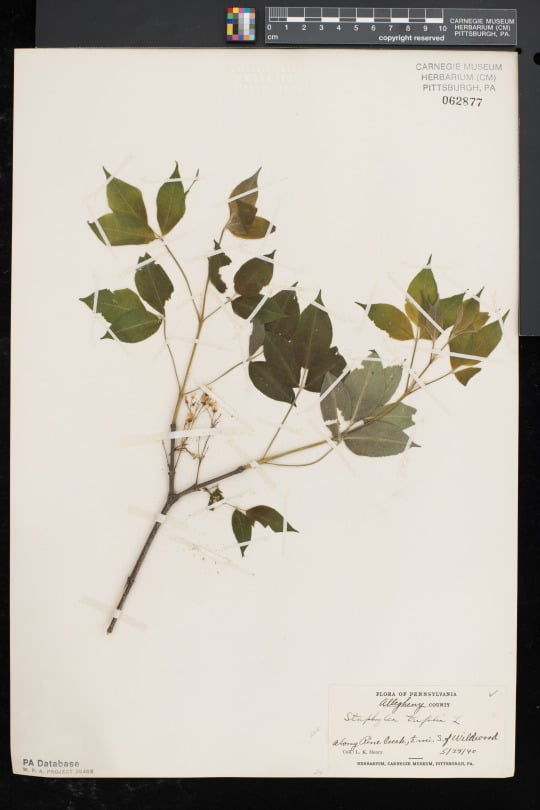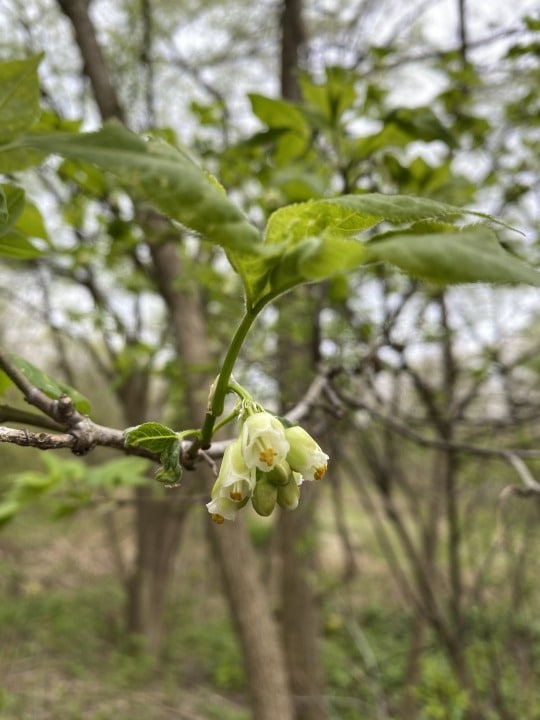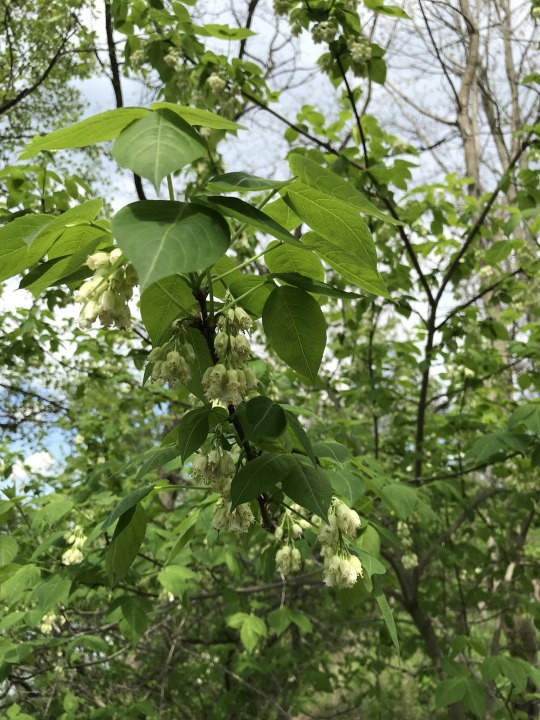Collected on this Day in 1940

This specimen was collected on May 29, 1940 by Leroy Henry along Pine Creek, north of Wildwood outside of Pittsburgh. Leroy Henry was a mycologist (studied fungi) and botanist who was curator at Carnegie Museum from 1937-1973.


Aptly called “bladdernut” (Staphylea trifolia), this charismatic native understory shrub produces clusters of white flowers in the spring. These dangling flowers develop into striking bladder-like fruit. In each “bladder” pouch are seeds. These fruit often persist through fall and some linger through winter, though the plant is leafless.

Bladdernut has a wide range across eastern North America, and can be found in relatively undisturbed forests in our area, often forming thickets.
Check back for more! Botanists at the Carnegie Museum of Natural History share digital specimens from the herbarium on dates they were collected. They are in the midst of a three- year project to digitize nearly 190,000 plant specimens collected in the region, making images and other data publicly available online. This effort is part of the Mid-Atlantic Megalopolis Project (mamdigitization.org), a network of thirteen herbaria spanning the densely populated urban corridor from Washington, D.C. to New York City to achieve a greater understanding of our urban areas, including the unique industrial and environmental history of the greater Pittsburgh region. This project is made possible by the National Science Foundation under grant no. 1801022.
Mason Heberling is Assistant Curator of Botany at Carnegie Museum of Natural History. Museum employees are encouraged to blog about their unique experiences and knowledge gained from working at the museum.
